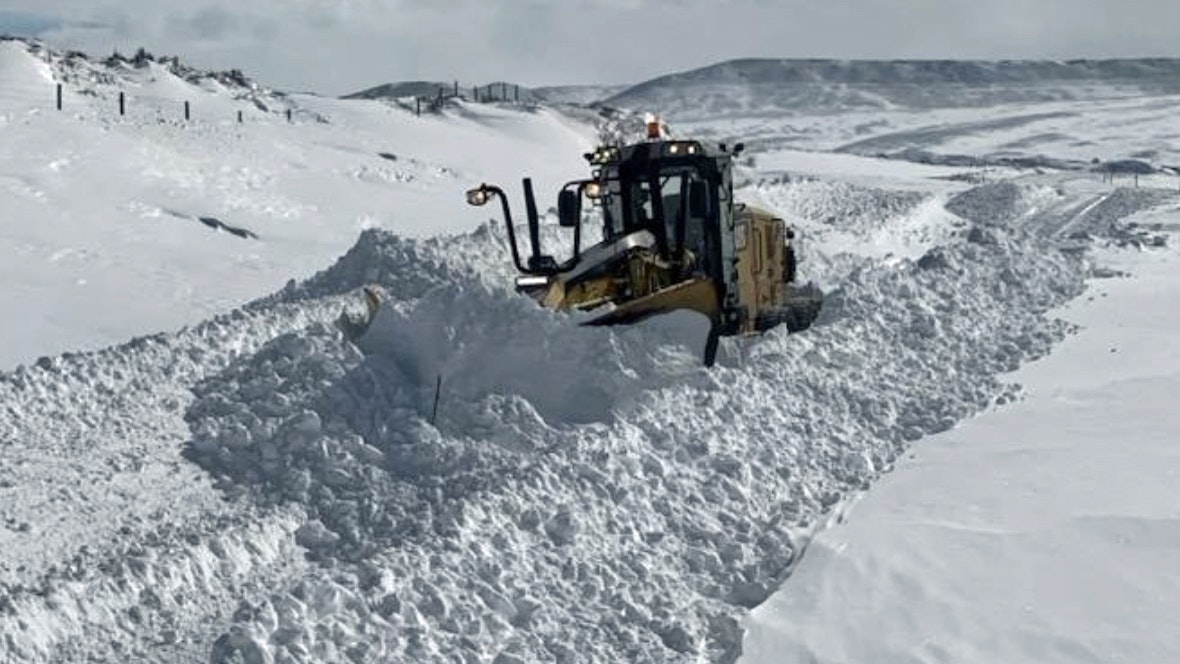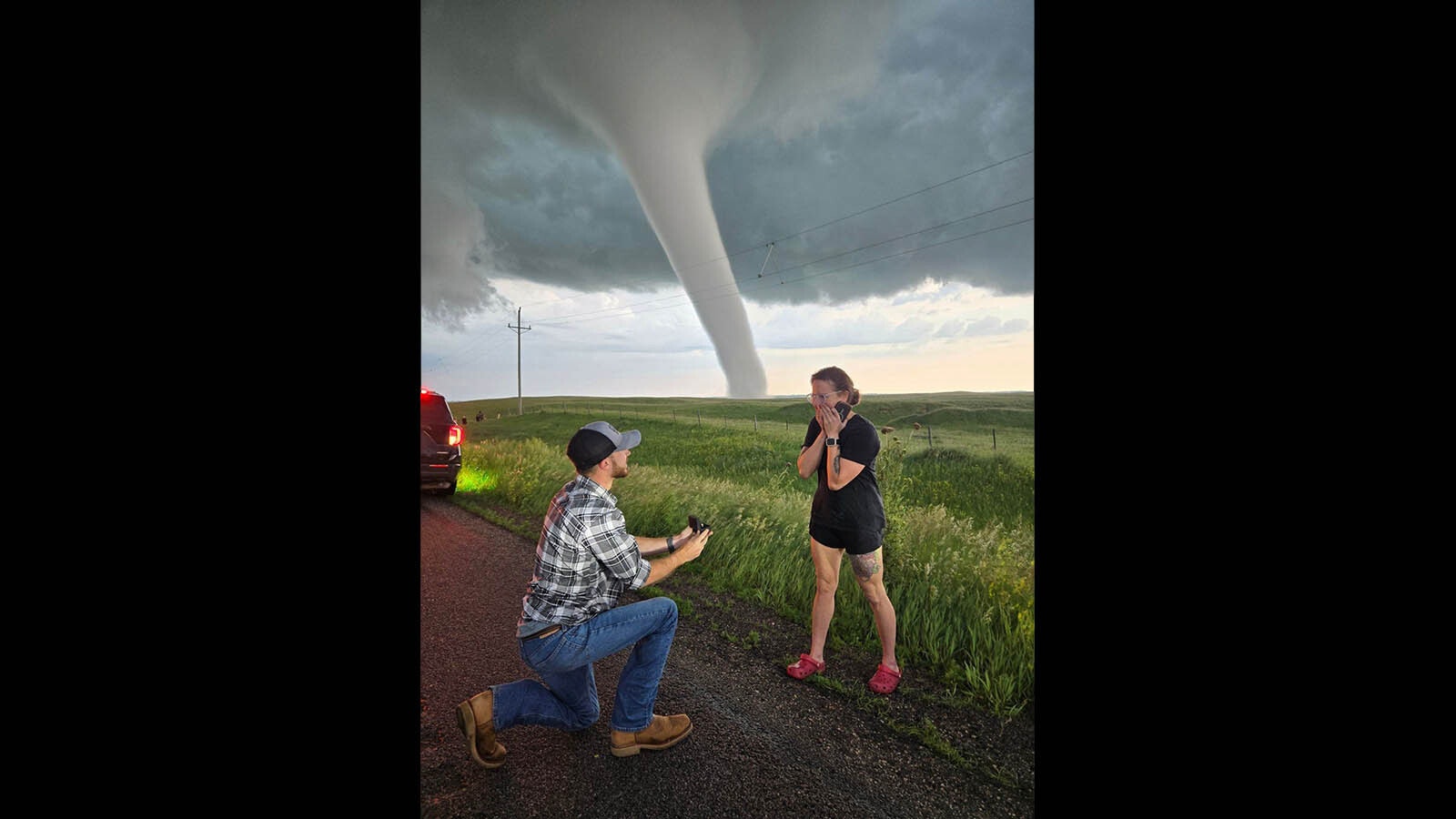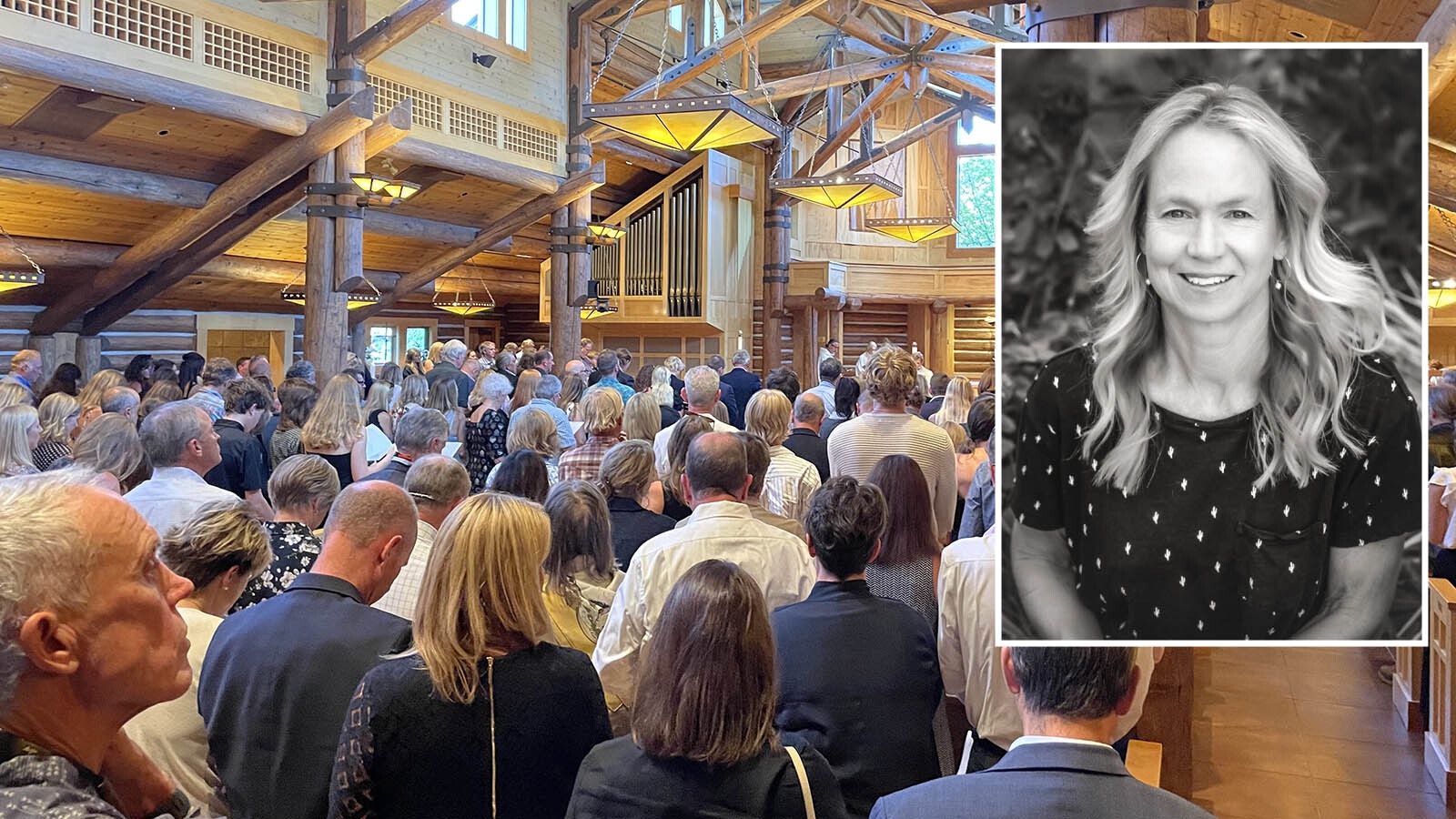It’s officially fall in Wyoming, and the season's first snow has settled in at the state’s highest elevations. With winter approaching, everyone wants to know what to expect this season.
There isn’t an easy answer, but plenty of misleading clues are fueling speculation about how brutal — or benign — the upcoming winter will be around the Cowboy State, especially after a particularly snowy and cold last winter season.
A recent long-term forecast by the website snowmobilers.com calls for “an epic season” of above-average snow across most of the United States, including Wyoming. Meanwhile, a long-term forecast from NOAA’s Climate Prediction Center and published by CNN predicted “a typical El Niño winter” that will be warmer and drier than average.
Cowboy State Day meteorologist Don Day has been studying Wyoming’s weather for decades and develops his long-range forecast by studying every detail of those decades. However, his method isn’t universal, and different methods produce various forecasts.
“It is very easy in the internet world to do some searching and find a variety of different long-range forecasts,” he told Cowboy State Daily. “The disparity this winter is because not everybody uses the same information. There’s no formula for exactly how to make a winter forecast. There are several ways to do it, so people do it differently, which is why you get different results.”
So, What’s The Verdict?
Day’s more confident prediction is that Wyoming’s 2023-2024 winter season will be and feel longer, mainly because of the fast and furious winter of 2022-2023.
“Last winter wasn’t a winter until after New Year’s Day. We didn’t have much winter through December, then January through April was brutal. You’re going to see a different winter this season,” he said.
El Niño will contribute to Wyoming’s winter. In his August 2023 long-range forecast, Day said the presence of El Niño and other weather patterns will “spread the misery of winter weather” across the nation. But this means winter weather that was intensely concentrated in certain areas last year will be more evenly dispersed this year.
Whatever the winter weather, it won’t get as intense as last winter. It will be “hard to beat that severity" of the snowstorms that shut down South Pass for weeks, crippled traffic on Interstate 80 and devastated wildlife populations.
But not all winters are equal, and Wyoming is a big state where the weather hits differently.
“Wyoming’s big enough that you will have different results with the winter. Last year was a good example of that. The winter in eastern Wyoming wasn’t nearly as severe as in western Wyoming,” he said.
Using his machine-man model, Day sees a tendency for some regions of the state to get more snow than others. And it will arrive sooner than later, with the first blasts coming as soon as October.
“The heavier snow this winter will be in the central and southern parts of the state compared to the north and northwestern parts. When we look at the season, start to finish, we’re going to have more winter this year because it won’t be so concentrated in three months, like last year. It will be more spread out and a longer winter season,” he said.
Long Range Means Long Odds
Day gets plenty of requests for long-range forecasts and is always confident with the predictions he publishes. But even his long-range forecasts aren’t absolute guarantees of what awaits Wyoming in the coming months.
“There’s a public demand to know what you think, so I tell them what I think,” he said. “But it’s really hard to have a metric about how accurate it’s going to be. Any forecast that is seasonal in nature, going out multiple months at a time, is extremely difficult. It’s a lot of work and a lot of analysis.”
The most common method used to produce long-range forecasts weather modeling. While the information is useful, many sources will publish information based on one model run without human input, producing a broad overview of what’s possible.
Most long-range forecasts published by major news outlets like CNN come from long-range weather modeling. None of the long-range forecasts now circulating are deliberately biased or willfully ignorant, but they can lull people into a false sense of security.
“It’s instant gratification and easy to do,” Day said. “The computer says this, and when the computers are smart, and the people are smart, we just go with it. But long-range computer modeling of the weather has shown, time and time again, that it has a very difficult time predicting seasons with any level of accuracy that gives you confidence that it’ll be right.”
Day used an analogy Wyomingites can relate to, comparing long-range forecasts to predictions made about the Sept. 17 football game between the Wyoming Cowboys and the Texas Longhorns.
“Texas was favored to beat Wyoming by 30 points, then won by 21 points,” he said. “Did Texas win the game? Yes. But was everything predicted correctly? No, because there are all these other variables you can’t get a grasp on.
“Just one or two things can trip up that model and make it go awry. I honestly think we're doing more harm than good with these long-range forecasts when you have so many different results. There's no standard way to do them."
Day says nobody has figured out “the secret sauce” to make long-range weather modeling consistently reliable. His system, which he calls “the machine-man mix,” makes him a weather historian as much as a modern meteorologist.
“It’s a little bit of modeling with an analogy technique, where I see if I can find several years in historical records that look like what we just experienced this summer that may be a hint of what’s coming this season,” he said.
Day compares current long-range computer modeling with a strong focus on current sea-surface temperature patterns of the oceans to historical data from Wyoming's past winter seasons. By combining past and present information, he can confidently produce a long-range forecast.
The I-80 Experience
No matter what happens, Day believes winter will negatively impact traffic on Interstate 80. The state's busiest thoroughfare will most likely be plagued by slippery stretches of pavement, poor visibility and traffic delays once the flurries start. So, basically a typical winter for the interstate, which is so notorious for winter hazards and shut-downs it’s been dubbed the “Snow Chi Minh Trail.”
Day sees the winter trials and tribulations on I-80 as another area where long-range forecasts, especially those published by national outlets, can be unintentionally misleading. In Winter 2022-2023, Laramie had below-average snowfall, while Rawlins had a record-breaking season despite being less than 100 miles apart.
Long-range forecasts struggle to account for such disparities since there's a comparatively small geographic distance between Laramie and Rawlins. Nevertheless, it was a severe reality last winter.
Furthermore, most modeling is biased toward the nation’s population centers, namely the East and West coasts. That can produce more accurate long-range weather forecasts for those regions but leave the rest of the nation and Wyoming behind.
"The East Coast experienced a mild winter and had no concept of how bad it was in the West," Day said. "A lot of national outlets will unintentionally bias their (forecast) based on their perception of where they're at. You have to apply the filters of perception, peoples' experiences, and the people who are communicating that (forecast.) The problem in communicating the weather like that is where the source is and what are they mostly concerned about."
Back In My Day . . .
When long-range forecasts fail, many people will back on their memories to prepare for winter. Day encounters this mentality all the time, which means he also gets to see the surprise when people realize their recollections aren’t as accurate as they believe.
It’s natural to take the memory of the most extreme winter season and spread it out over a more extended period. That can lead to a different kind of fog obscuring people’s foresight.
“Weather memories get clouded by the fog of time,” he said. “I had a guy email me who swore that every year in the late 1970s and early 1980s, it snowed 100 inches in Cheyenne. So, I looked at the data. Two or three winters were very snowy in that timeframe, but the majority weren’t. He was shocked.”
Hurry Up And Wait
Ultimately, Day falls back to the most accurate and sometimes frustrating forecast — the winter will be what it will be. While he has confidence in the trends and historical data, the weather will be whatever, whether we like it or not.
“I can’t tell you if it’s going to be a white Christmas, but I can tell you what the trends should be like in December,” he said. “I could tell you what February’s going to be like on a broad scale, but I can’t plan your outdoor wedding in May. I’ll be able to tell you in April how the winter went.”
Andrew Rossi can be reached at arossi@cowboystatedaily.com.





